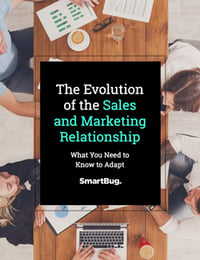
Understanding the Buyer’s Journey: When Should Sales Get Involved?
October 1, 2018
By Jen Spencer
Let’s cut right to the chase. The answer to the question, “At what point in the Buyer’s Journey should sales get involved?” is simple. Sales has the opportunity to get involved at every stage in the Buyer’s Journey, although the way in which sales engages should change based on where the buyer is in his or her journey.
Before we dig into some tactical examples of how sales can engage at each stage of the Buyer’s Journey, let’s take a step back and make sure we’re on the same page when it comes to the Buyer’s Journey.
The Buyer’s Journey is the process that buyers go through to become aware of, evaluate, and purchase a new product or service. There are three main stages of the Buyer’s Journey—awareness, consideration, and decision—and your buyer is likely experiencing the following thoughts and feelings at each stage:
Awareness Stage
“Hmm … I’m realizing that I have a problem. Things aren’t 100 percent the way I would like them to be.”
Consideration Stage
“Now that I know I have a problem, I need to explore options for solving my problem. I think I’ll start with some Google searches and check out a few company websites. I can’t be the first person in the world to be experiencing this problem.”
Decision Stage
I have a few options for how to solve my problem, so now I need to select the option that makes the most sense for me.”
How Sales Can Help During the Awareness Stage
The biggest mistake sales professionals make when navigating the Buyer’s Journey is offering a decision-stage solution for a buyer who is just starting out in the awareness stage. I’ve seen it play out time and time again, and this scenario only frustrates both the buyer and the salesperson. Although this is typically the stage where marketing will be creating content and campaigns to attract relevant buyer personas, sales does not need to be waiting in the wings. A sales professional working with a buyer in the awareness stage can and should be sharing helpful content that further assists the buyer in his or her self-discovery. The goal of the salesperson should be to help the buyer realize her pain, rather than jumping ahead to try to solve the problem. Salesperson translation: This is not the appropriate time to schedule a demo of your product.
How Sales Can Help During the Consideration Stage
Yes, the buyer knows something is awry and is interested in solving the problem, but she’s still not ready for a product demo. After all, perhaps her problem could be solved by hiring an intern, by altering her current process, or by working from home one day a week. A salesperson may think he has the answer to all of her problems, but the buyer is still in a fairly broad exploratory mode. The most helpful thing a salesperson can do during this stage is provide highly relevant, educational resources, such as the following:
- Product comparison guides
- Live interactions (webinars, podcasts, live video)
- Case studies
- Product or service FAQs
- Data sheets
- Industry reports
- Cost calculators
The salesperson’s goal is to help the buyer connect the dots between her problem and a potential solution. During the consideration stage, the buyer is comparing solutions in general.
How Sales Can Help During the Decision Stage
This is it. The decision stage is classically known as show time for a salesperson; however, the worst thing a salesperson could do at the decision stage is treat the buyer like any other buyer and ignore the journey that this particular buyer has traversed. During the decision stage, the salesperson has the opportunity to share experiences with the buyer that are focused on a very specific product or service. For example, the salesperson could share vendor comparison guides and offer product demos or free trials, or perhaps audits or consultations.
The key to successfully supporting a future customer along her buyer’s journey is to focus on that individual buyer’s personal needs, pain points, frustrations, and goals, keeping in mind that her needs will vary depending on where she is in her buyer’s journey.

About the author
Jen Spencer formerly oversaw all operations, executing on SmartBug's growth and market expansion strategy, which is focused on delivering superior, cutting-edge service to the company's customers and partners while continuing to invest in the people and culture that make SmartBug® a great place for employees to work and develop their careers. Read more articles by Jen Spencer.









